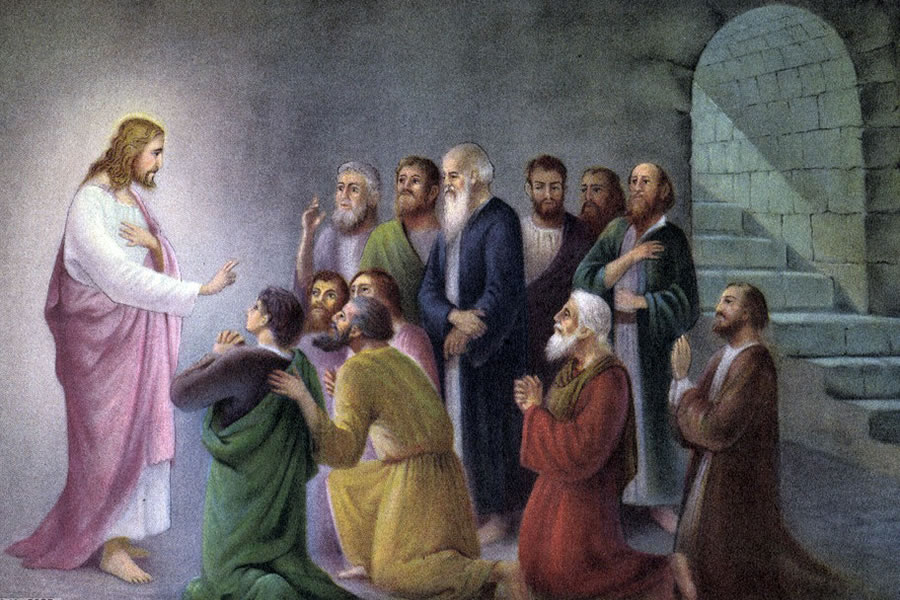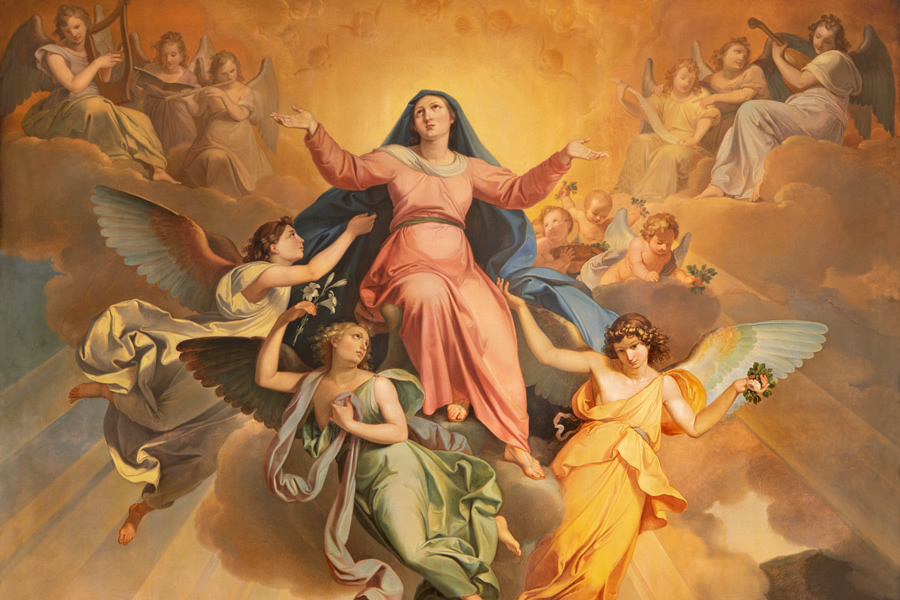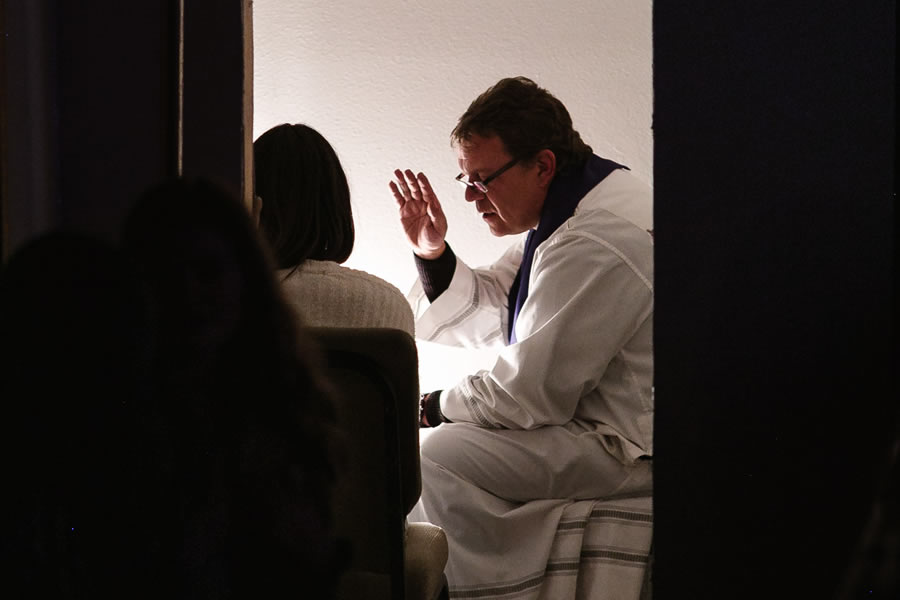Corpus Christi Blog

Care of the Body
09-26-2021Weekly ReflectionJen Arnold, M.A. in Theology and CatecheticsPerhaps you have heard the following quote, often attributed, potentially inaccurately, to C.S. Lewis: “You do not have a soul. You are a soul. You have a body.” Regardless of where this concept came from, it is not necessarily original in substance, but it is worth developing a deeper understanding of what it means.
READ MORE
Priest, Prophet, and King
09-19-2021Weekly ReflectionJen Arnold, M.A. in Theology and CatecheticsJesus Christ, the Incarnate Word of God, had a three-fold office and mission during His time with us on Earth. He was priest, prophet, and king. However, He did not simply occupy these roles like those before Him. We have plenty of examples of great priests, prophets, and kings throughout scripture and salvation history. Rather, He came to fulfill each of those roles in its perfection so that the Kingdom of Heaven might be made manifest on Earth.
READ MORE
Sin
09-12-2021Weekly ReflectionJen Arnold, M.A. in Theology and CatecheticsThis week we’re going to closely examine sin – its definition and the different types. Often times, those outside of the Catholic Church misunderstand the Catholic approach to sin. You’ve probably heard the phrase “Catholic guilt” as a pseudo-explanation for our emphasis on our sins as if to keep us down, wallowing in our own muck, and avoiding the fun in life. The truth is, the Catholic approach to sin provides an honest and vulnerable look at the reality of human nature, while providing hope in mercy and forgiveness and motivation to do better. If heaven is truly our goal, we cannot achieve it without a continual examination of our relationships with God and our neighbors.
READ MORE
Anger
09-05-2021Weekly ReflectionJen Arnold, M.A. in Theology and CatecheticsToday we will engage in an examination of anger. We will determine when it is or is not a sin and learn what we might do about it when it starts to consume us. This topic seemed timely to me since, throughout the last few years, many of us have experienced anger at various people and situations, whether general or specific. We live in a society that is currently polarized on everything – politics, the handling of COVID, the closure of our churches, the media, and whether or not we are being charitable to our neighbor. In our climate today, there seems to be a reflex to be angry toward those with whom we disagree, rather than a desire to seek understanding through civil dialog. In addition to all these external factors, we have all had to deal with our own individual situations that stir up anger, whether it be with family members, friends, coworkers, and perhaps even our priests, bishops, and others within the Church. If you have not experienced some level of anger in the last couple of years, then you are certainly on a path to heroic virtue and should keep up the good work. However, I suspect the vast majority of us have experienced at least some struggle with anger in our recent past.
READ MORE
St. Justin Martyr
08-29-2021Weekly ReflectionJen Arnold, M.A. in Theology and CatecheticsBy now, you know that when you attend Mass on Sunday you are participating as a member of the Body of Christ, which consists of all Christians – past, present, and future. We know that when we participate in the Eucharist, we are doing so in union with our fellow Catholics all over the world. We also stand and kneel at the foot of the same cross with all those in Purgatory and Heaven. However, when you attend Mass, how often do you consider your connection to the earliest members of the Church and understand that you are practicing something that has been exercised for thousands of years?
READ MORE
Peace
08-22-2021Weekly ReflectionJen Arnold, M.A. in Theology and CatecheticsPeace, or a lack thereof, seems to be a prevalent theme in our country and world today. We are polarized on every issue we are facing as a society and are well aware of the spiritual forces seeking to promote discord and animosity among us. We constantly pray for peace: peace in our families, peace in our Church, peace in our country, and peace in the world. However, it is not enough to simply pray for peace, rather, we must actively pursue it by our own actions.
READ MORE
The Assumption
08-15-2021Weekly ReflectionJen Arnold, M.A. in Theology and CatecheticsToday, we celebrate the feast of the Assumption of the Blessed Virgin Mary. In this feast, we recognize the Church teaching that after her earthly life was over, Mary was assumed, body and soul, into heaven by virtue of her sinless nature. In September and October of 2020, I wrote a 5-part series on the Marian dogmas and doctrines taught by the Magisterium, with the Assumption published on September 27, 2020. If you were away from the parish at that time, or would like to refresh your memory, I invite you to visit our parish website to find and read it.
READ MORE
But Deliver Us from Evil
08-08-2021Weekly ReflectionJen Arnold, M.A. in Theology and CatecheticsToday, we reach the seventh and final petition of the Lord’s Prayer – “but deliver us from evil.” It makes sense that the prayer would end on this note as it is one of the most important, if not the most important thing we could be asking for. The Church teaches us that, in this particular case, “evil is not an abstraction, but refers to a person, Satan, the Evil One, the angel who opposes God. The devil is the one who ‘throws himself across’ God’s plan and his work of salvation accomplished in Christ” (CCC #2851). When we are asking to be delivered from evil, we are asking specifically to be protected from Satan’s harm, as his very goal is to prevent us from obtaining our ultimate salvation so that we might suffer eternally as he does. What could be more important?
READ MORE
And Lead Us not into Temptation
08-01-2021Weekly ReflectionJen Arnold, M.A. in Theology and CatecheticsThis week we find ourselves with perhaps the most controversial petition of the Lord’s Prayer – “lead us not into temptation.” Over the years, and even very recently, there has been much discussion over whether God would actually lead His people into situations that would cause them to sin. Why would a good and loving God do such a thing? Surely, He would not lead us down a path of sin and failure. What we need here in this dialogue is a proper understanding of temptation and virtue and the good that worldly temptation can provide for our spiritual health.
READ MORE
And Forgive Us Our Trespasses, as We Forgive Those Who Trespass Against Us
07-25-2021Weekly ReflectionJen Arnold, M.A. in Theology and CatecheticsThe Catechism refers to the fifth petition in the Lord’s prayer as “astonishing.” It says that the first part of this phrase is implied in the first three petitions, which honor and praise God, because Christ’s sacrifice was precisely for the forgiveness of our sins. Therefore, in praising Him, we are acknowledging what He has done for us in that act. However, “according to the second phrase, our petition will not be heard unless we have first met a strict requirement. Our petition looks to the future, but our response must come first, for the two parts are joined by the single word ‘as’” (CCC #2838). If we want forgiveness for our transgressions, we are obligated to forgive the transgressions of others.
READ MORE
Give Us This Day Our Daily Bread
07-18-2021Weekly ReflectionJen Arnold, M.A. in Theology and CatecheticsAfter the first three petitions of praise to God for God’s sake, the rest of the Lord’s Prayer draws us into God’s mercy as we recognize our fallen humanity and need for God’s assistance in all things. We begin with the fourth petition by praying, “Give us this day our daily bread.”
The first words of this petition – give us – are a request from us to our Father with a sense of implicit trust in His goodness. Just as a child is completely dependent and trusts his earthly father to care for his needs, we are helpless children who turn to our heavenly Father for our earthly and spiritual needs with the confidence that He will provide for us. That trust and confidence we express in asking Him to provide for us “glorifies our Father by acknowledging how good he is, beyond all goodness” (CCC #2828). Even in the act of asking something for ourselves, we cannot help but praise Him in the process because of His unending goodness.
READ MORE
Thy Will be Done on Earth as it is in Heaven
07-11-2021Weekly ReflectionJen Arnold, M.A. in Theology and CatecheticsWe now come to the third petition of the Lord’s Prayer, which is also the last of the seven petitions directed to God Himself for His own sake – “Thy will be done on earth as it is in heaven.”
It is God’s deepest desire for every single one of us to live with Him eternally in heaven. That is precisely why He sent His Son, Jesus, who is “the way, the truth, and the life,” so that we might follow Him and His commands in order to merit our place in our heavenly home (Jn 14:6). When we ask that God’s will be done, our first questions might have something to do with knowing and understanding what God’s actual will is in our day to day lives. The Catechism teaches us that we begin with Jesus’ own words regarding the new commandments. “His commandment is ‘that you love one another; even as I have loved you, that you also love one another.’ This commandment summarizes all the others and expresses his entire will” (CCC #2822). Jesus did not come to abolish the old law, but rather to fulfill it. We still ought to obey the Ten Commandments, but Jesus provides the motivation and love for following them rather than expecting us to just adhere to them robotically. For example, we choose to be honest, not only because God has told us lying is against His will, but also because we love the person with whom we are speaking as a child of God and do not want our words to cause harm. Knowing and doing the will of God always begins with the consideration of love for the other. That being said, we must be prudent in our discernment of love, because what might appear to be a loving action in the earthly sense is not actual love in the context of eternal salvation. We must strive to do what is best for the other’s soul.
READ MORE
Thy Kingdom Come
07-04-2021Weekly ReflectionJen Arnold, M.A. in Theology and CatecheticsAs we continue our examination of the Lord’s Prayer, we come to the second petition – “Thy kingdom come.” In this petition, we call upon God with the hope that Jesus will return soon to take us all to the kingdom of heaven where we can bask in the glory of our true King for all eternity. No kingdom has ever existed on earth that can match the beauty and justice of the heavenly kingdom that awaits us.
READ MORE